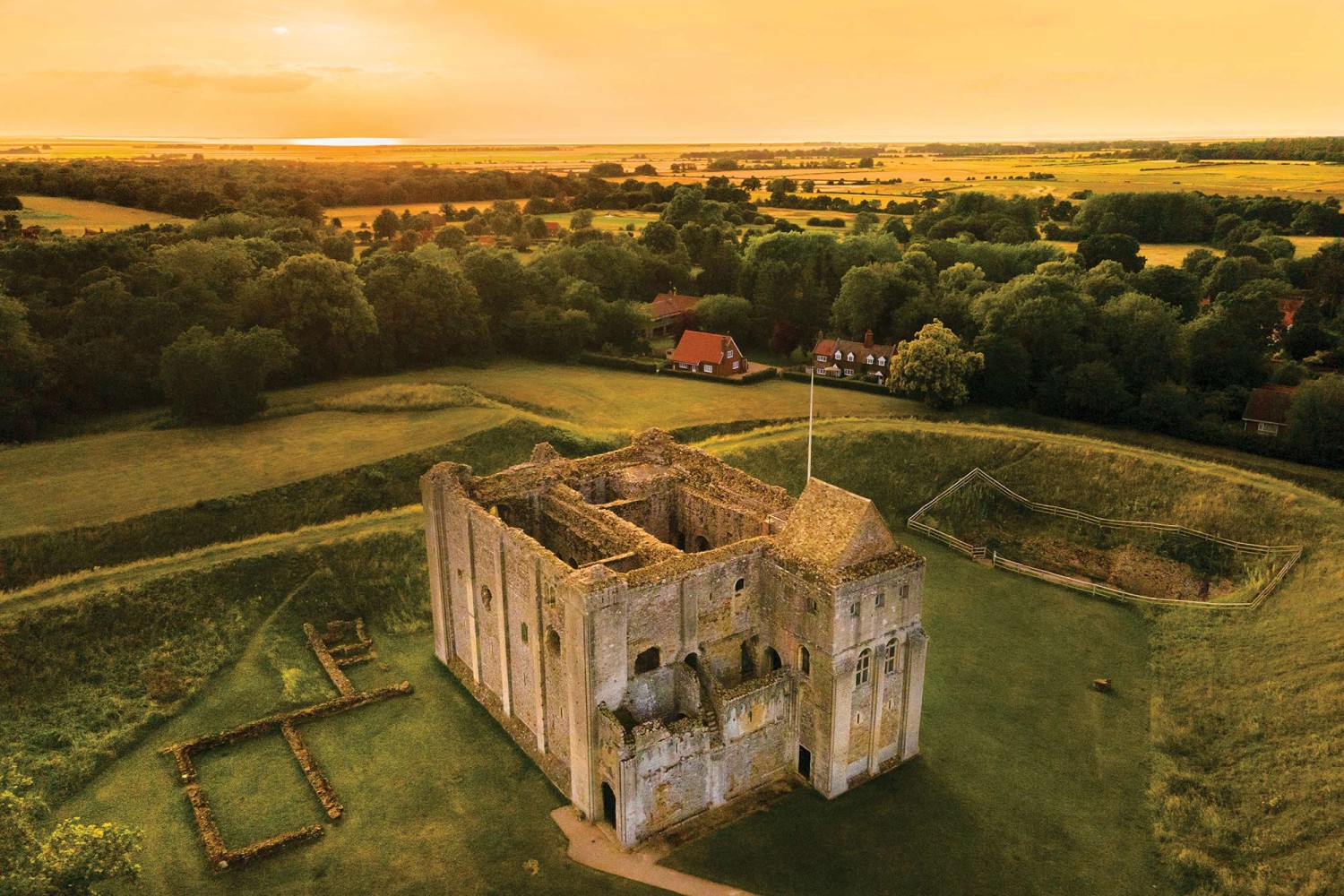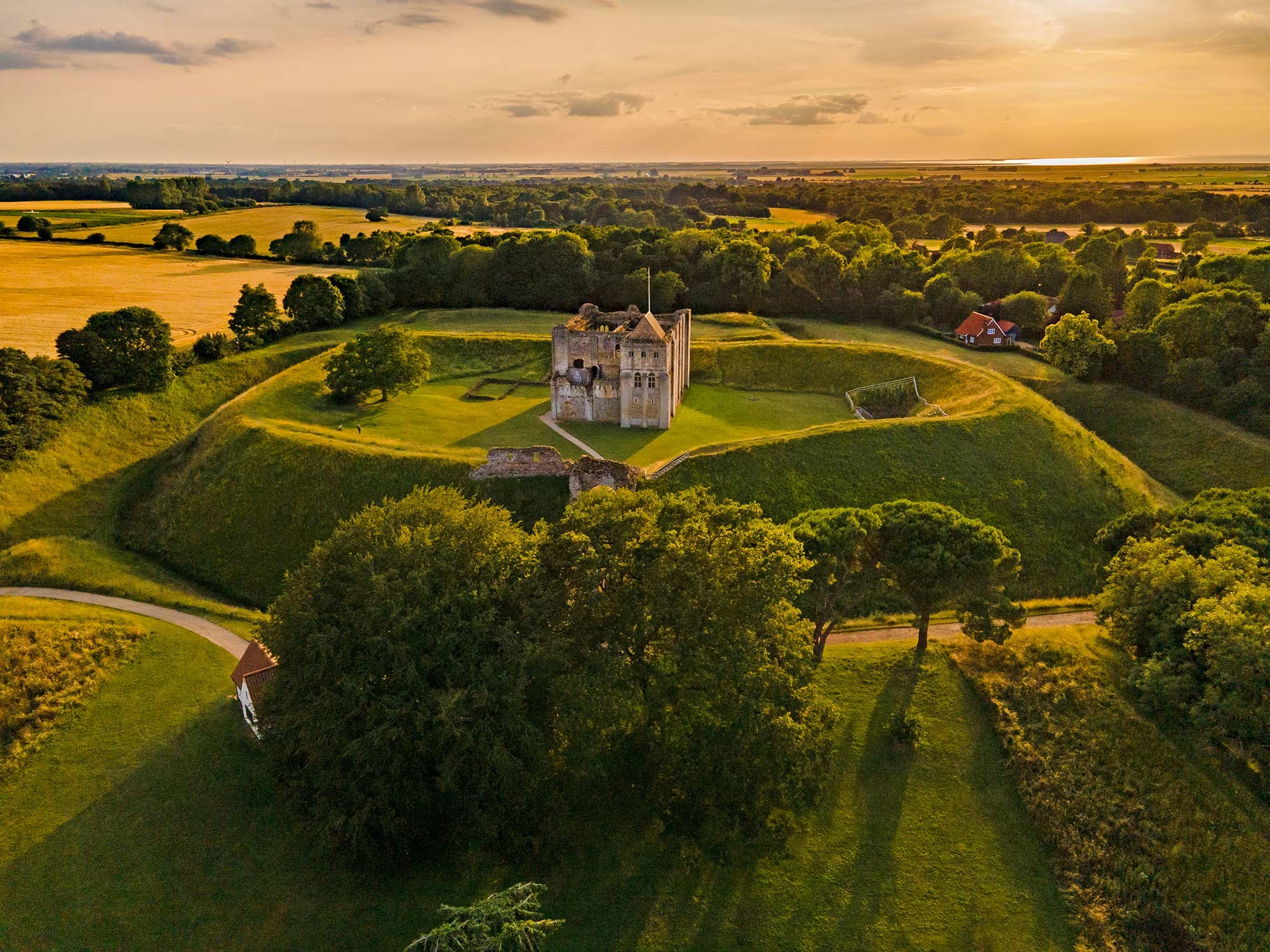
Tracing the tale of Castle Rising Castle
A fascinating fortress with a remarkable past, the striking keep at Castle Rising is brimming with stories, secrets and splendour
An astounding county renowned for its rich history, Norfolk is home to an array of spectacular landmarks, but few can compare with the breathtaking ruins of Castle Rising Castle. Surrounded by more than 12 acres of mighty earthworks, this magnificent medieval monument is one of the largest, best preserved and most lavishly decorated keeps in England.
The enthralling story of Castle Rising Castle stretches back to the years following the Norman Conquest, when King William Rufus granted the ‘Manor of Rising’ to nobleman William d’Albini in recognition of his loyalty. It was his son and heir, William d’Albini II, who dramatically transformed the minor settlement into an extravagant lordly residence in the 1140s. Following his advantageous marriage to Adeliza of Louvain (the widow of King Henry I), he built the impressive castle keep to showcase his elevated wealth and status.
At a stroke William had been raised up to the highest ranks of Anglo-Norman aristocracy, so Castle Rising Castle was designed to make a statement. Constructed using expensive Barnack stone from Stamford and rare Silvercarr sourced from North Wootton, the keep is a testament to its builder’s boastful ambitions. The style of the enclosed entrance stairway (termed a forebuilding) was directly inspired by the William Rufus keep at Norwich, the greatest royal castle of the age. Particularly noteworthy for its elaborate external masonry and exquisite internal decoration (including the lavish arcaded frieze that adorns the stair wall), this splendid structure is the best surviving forebuilding of any 12th century castle in the country.
My family have always taken pride in preserving the castle and its history...The d’Albini family retained lordship of the Manor of Rising until 1243, when Hugh d’Albini died without leaving sons or successive heirs. His assets were divided among sisters and co-heiresses, with the castle passing by marriage to Roger de Montalt and remaining in his family until it was sold to the Crown in 1327.
The most famous period in the castle’s history began three years later, when the extravagant rural residence was purchased by King Edward III as a place of exile for his mother Queen Isabella. Born in Paris, she was vilified as the ‘She-wolf of France’ following her alleged involvement in the murder of her husband King Edward II and her scandalous affair with his enemy Roger Mortimer.
Although sent there in disgrace, Isabella enjoyed a somewhat luxurious lifestyle at Castle Rising and was by no means a prisoner in the normal sense of the word. The remains of stone buildings visible to the south of the keep date from the massive refurbishment that took place upon her arrival, which included the construction of a sumptuous private suite. She made pilgrimages to Walsingham, enjoyed hawking in the castle’s deer park and entertained numerous visitors with fresh food and fine wines sourced from King’s Lynn merchants.
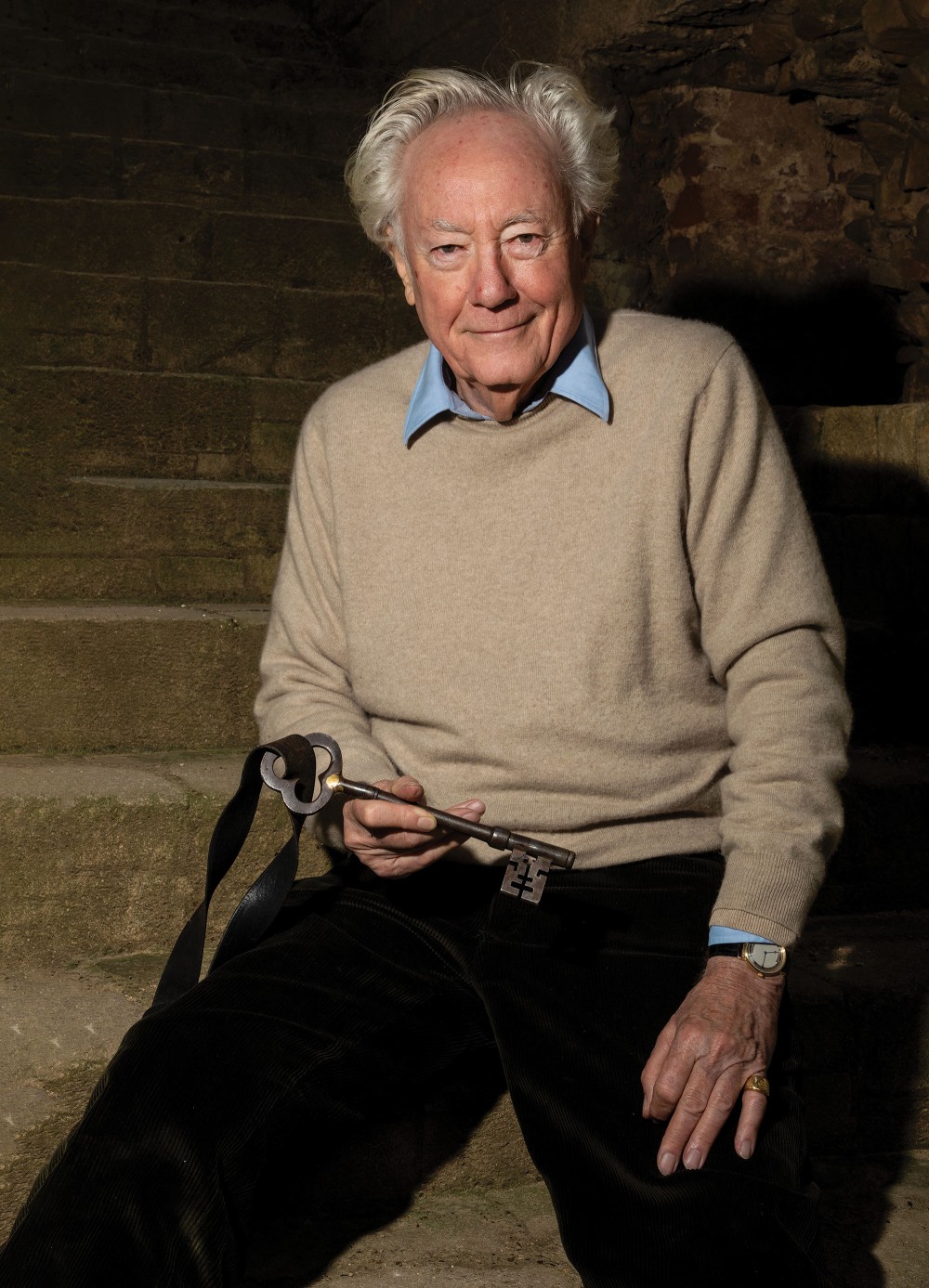
ABOVE: Castle Rising Castle is still owned by the Howard family, one of the leading aristocratic dynasties in late medieval and Tudor England. Lord Greville Howard, a descendant of the Norman earl who constructed the striking edifice, holds the key to the castle today.
After Isabella’s death in 1358, Rising passed to her grandson Edward, The Black Prince. He spent considerable sums of money strengthening the keep’s fortifications in case of attacks and added the Manor to the Duchy of Cornwall. The castle changed hands several times over the following decades and was primarily used as a hunting lodge before falling into a state of disrepair through neglect.
In 1544 King Henry VIII granted Rising manor and castle to Thomas Howard 3rd Duke of Norfolk, a successful military commander and one of the most powerful noblemen of Tudor England.
The striking ruin of Castle Rising Castle remains in the Howard family today, the present owner being a descendant of William d’Albini II – the fascinating figure who started its story more than eight centuries ago.
“My family have always taken pride in preserving the castle and its history,” says Lord Greville Howard, the current custodian of the Rising estate. “When the building was listed as a National Monument in the 1950s, my grandfather passed a deed of guardianship to the state to allow it to be stabilised and weatherproofed. Since regaining custody of the castle we’ve continued to share its beauty with visitors, working with English Heritage to ensure it can be expertly maintained for future generations to admire.”
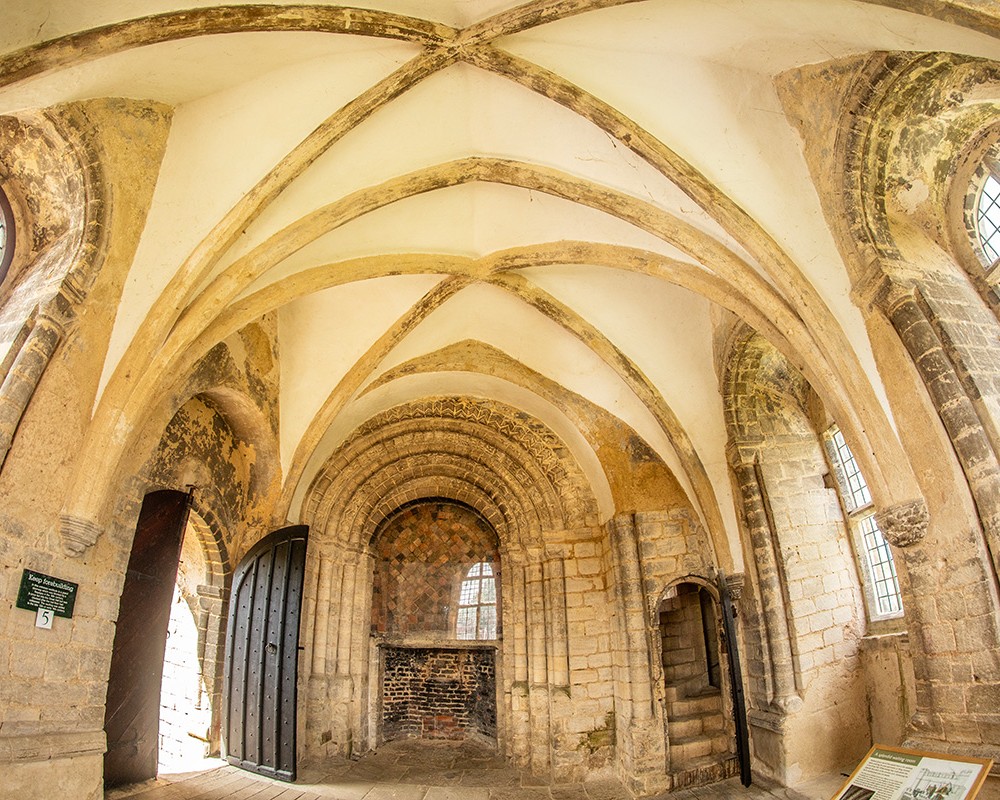
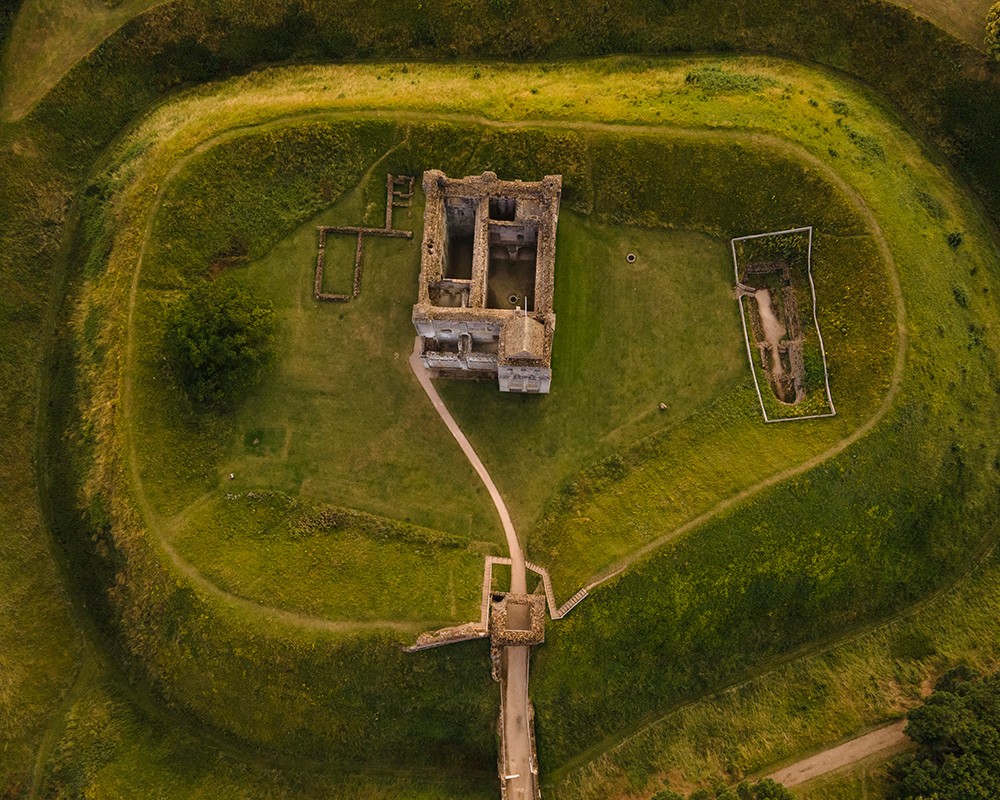
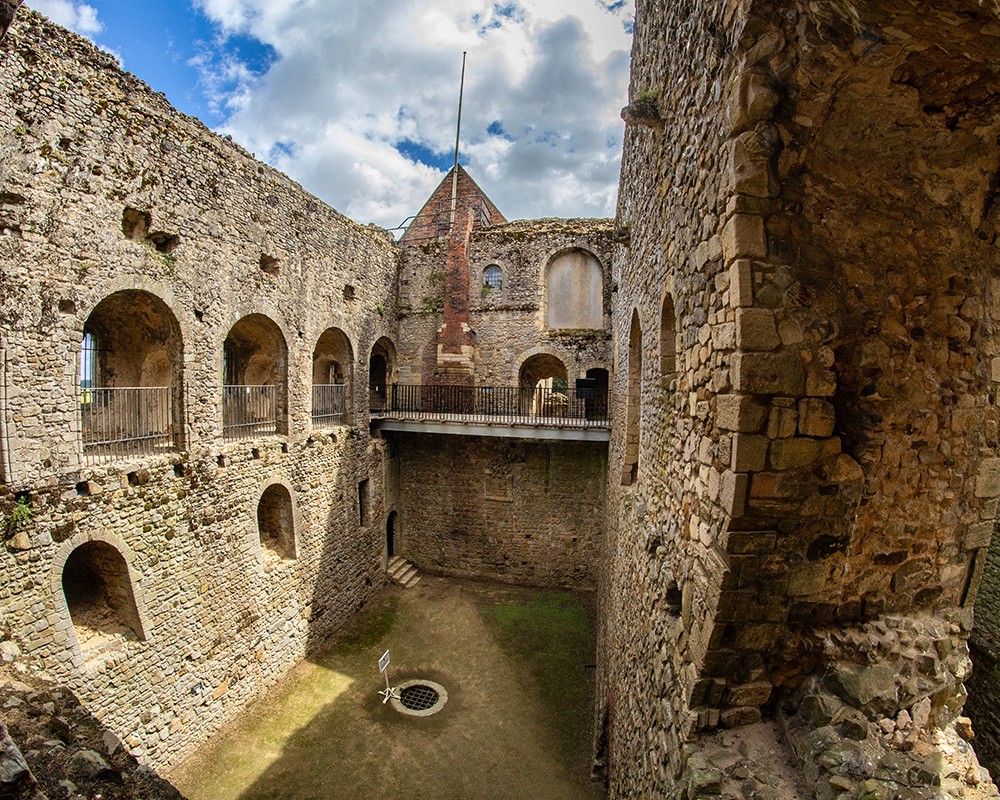
An awe-inspiring place to explore, Castle Rising Castle is undoubtedly among East Anglia’s most spectacular settings. The great ringwork surrounding the site is one of the largest earthworks to be found at any castle in England, and it encloses a true treasure trove of history. To the north of the grand keep, the intriguing remains of an early Norman church can be found partially buried within the earth. Discovered in the early 19th century, it’s thought to have been the earliest building on the site, predating even the castle itself.
With its extraordinary past, atmospheric quality and magnificent surviving features, it’s no wonder Castle Rising Castle attracts thousands of visitors every year. It was constructed with a vision to amaze and impress almost 900 years ago, and it still speaks volumes for its builder’s nobility and grandeur today.
